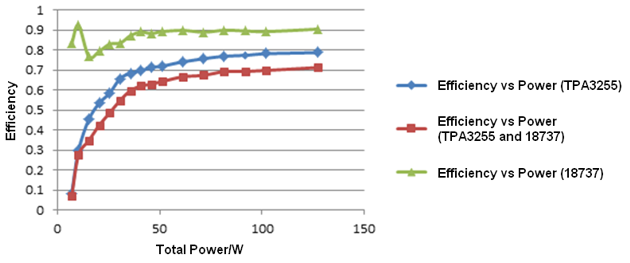SLAA898 September 2022 TAS3251 , TPA3255
4.1.1 Efficiency for TPA3255
For the power amplifier TPA3255, efficiency mainly depends on output load R and power P. For the same load R, efficiency increases as P goes higher. Likewise, for the same power, efficiency increases as R gets larger. Figure 3-1 shows the efficiency of the TPA3255 device when connected directly to a 4-Ω load in blue.
 Figure 4-1 Efficiency Characterization for 18737
Figure 4-1 Efficiency Characterization for 18737